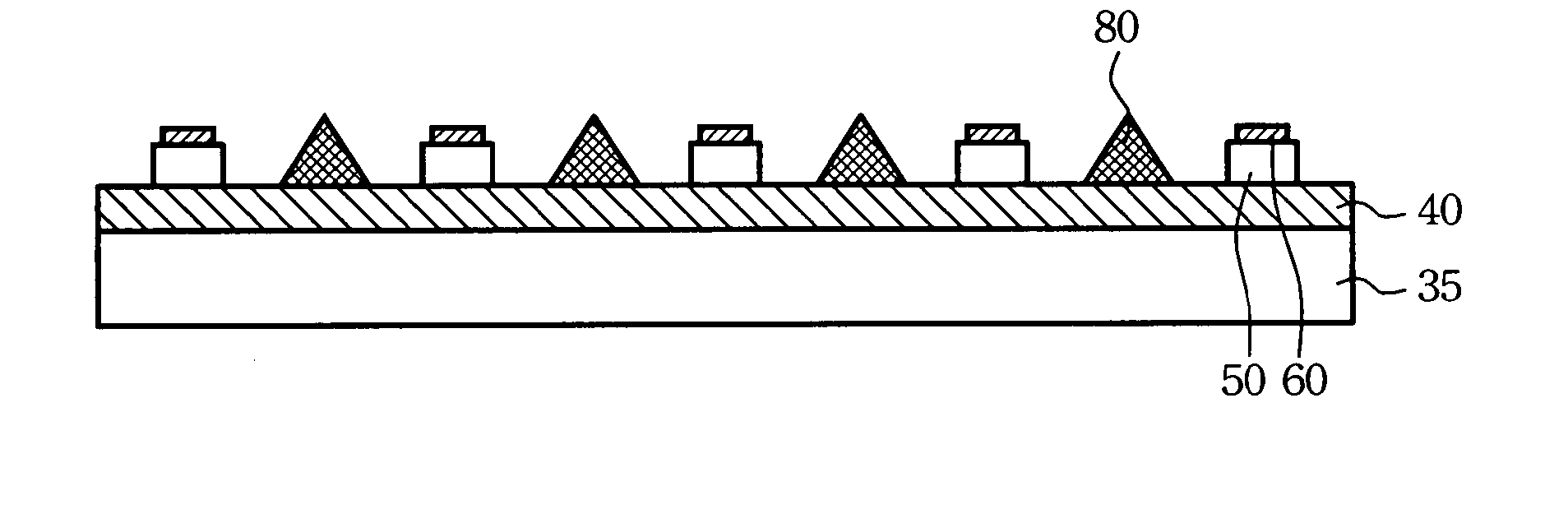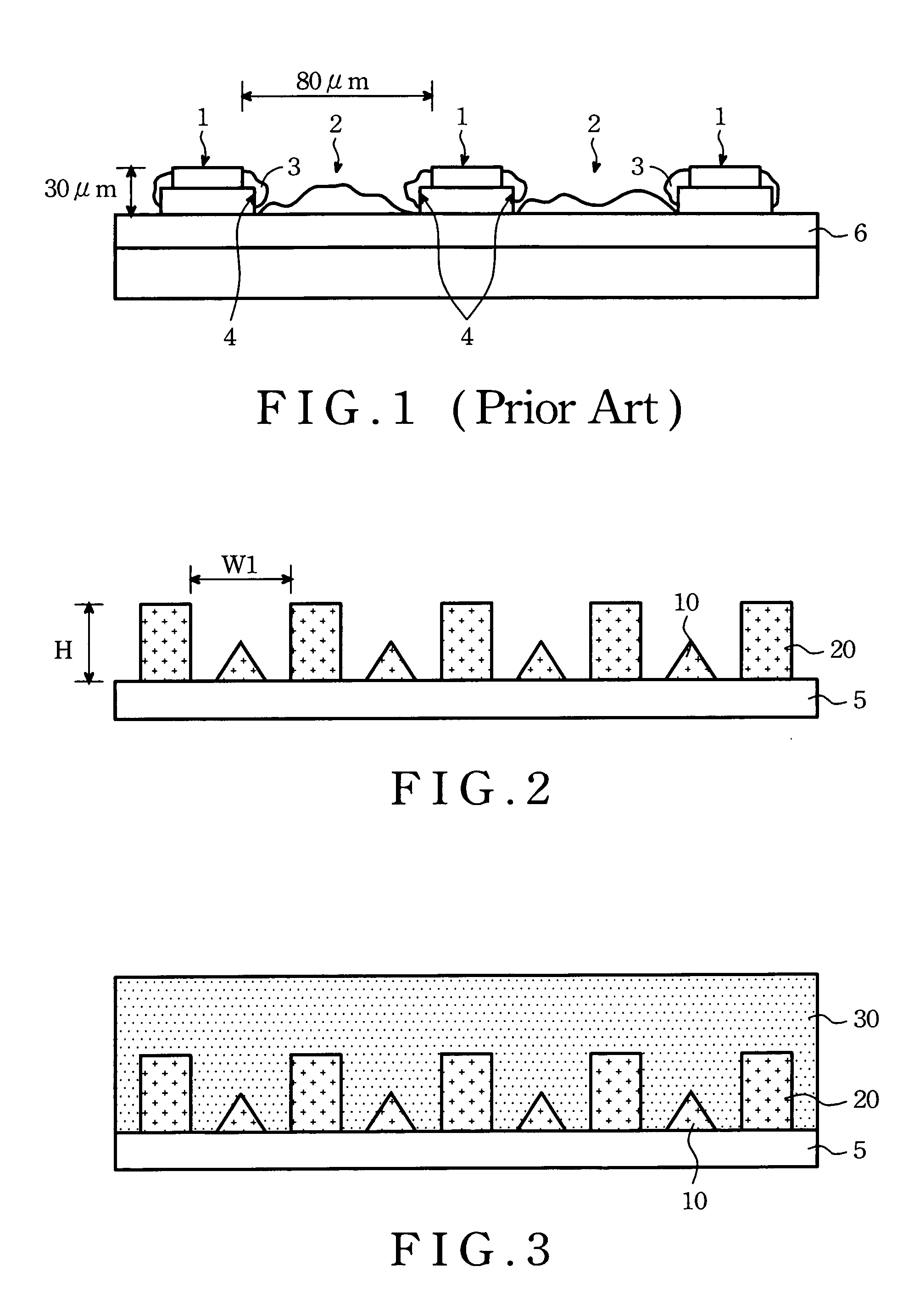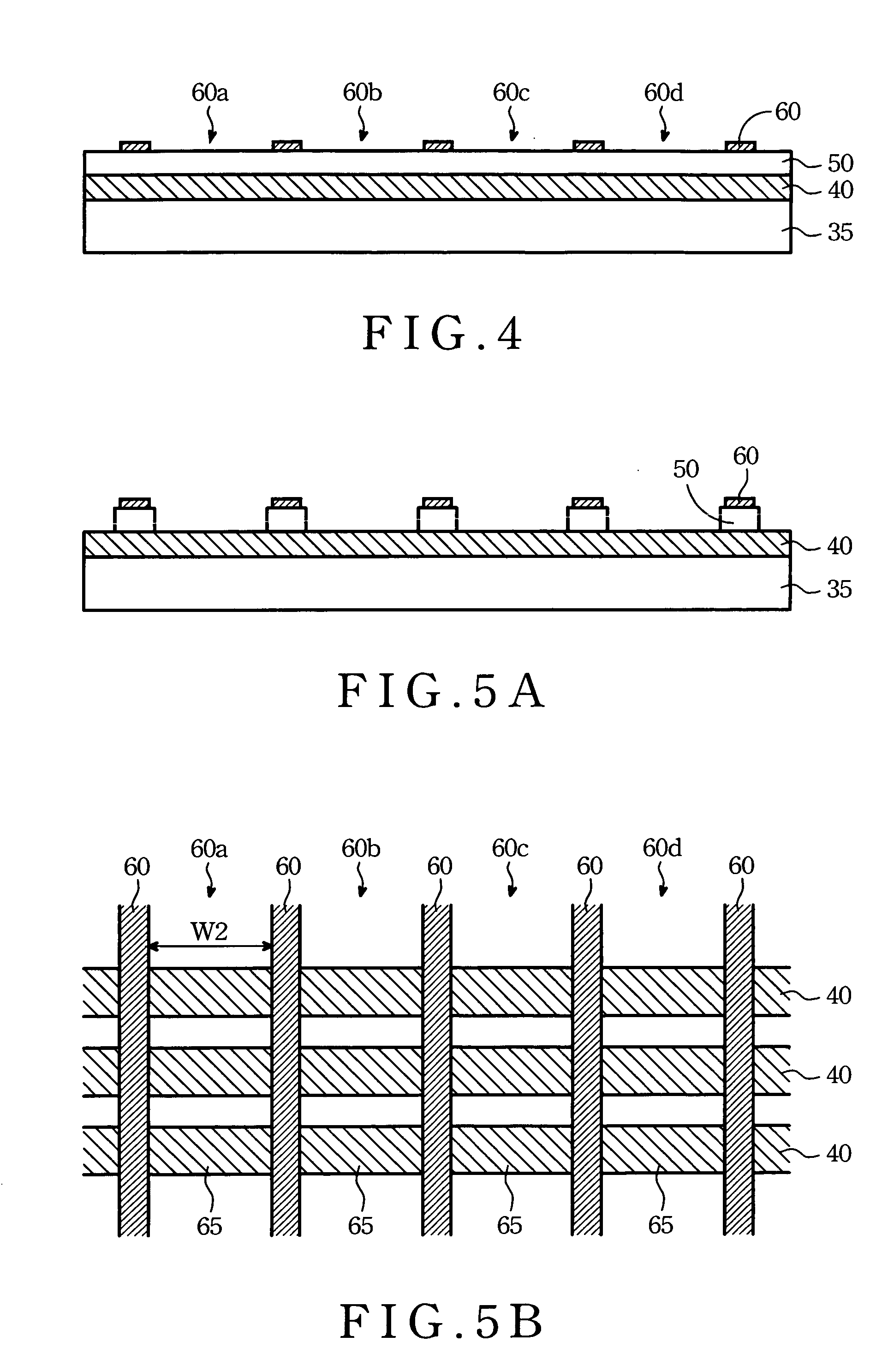Method of fabricating carbon nanotube field emission source
a carbon nanotube and emission source technology, applied in the field of field emission display, can solve the problems of incomplete exposure of photo-sensitive, inability to provide a method, and difficulty in etching the opening of the pixel, so as to improve the current density, brightness, and uniformity of the emission source. the effect of improving the short problem
- Summary
- Abstract
- Description
- Claims
- Application Information
AI Technical Summary
Benefits of technology
Problems solved by technology
Method used
Image
Examples
Embodiment Construction
[0021] The conventional fabricating processes for a CNT field emission source formed descried in the background of the invention are usually by a screen print method, which prints a CNT paste layer on cathode lines through openings of the three-electrode structure. Each opening is located at an interval between two gate-lines (vertical lines) having a cathode line (horizontal line) pass through thereto. Since no available mounting points provided in the bottom of the openings for 30 μm in depth of the openings have, the CNT paste is usually adhered to the sidewalls of the openings.
[0022] For a case of using a photosensitive CNT paste layer, the situation is still not being improved due to incomplete exposure on sidewalls during a lithographic process. The present invention can improve above problems. Moreover, the shape and size of the emitting sources can even predetermine.
[0023] The method is described in detailed as follows;
[0024] Firstly, a step of providing an imprint positi...
PUM
| Property | Measurement | Unit |
|---|---|---|
| width | aaaaa | aaaaa |
| depth | aaaaa | aaaaa |
| diameter | aaaaa | aaaaa |
Abstract
Description
Claims
Application Information
 Login to View More
Login to View More - R&D
- Intellectual Property
- Life Sciences
- Materials
- Tech Scout
- Unparalleled Data Quality
- Higher Quality Content
- 60% Fewer Hallucinations
Browse by: Latest US Patents, China's latest patents, Technical Efficacy Thesaurus, Application Domain, Technology Topic, Popular Technical Reports.
© 2025 PatSnap. All rights reserved.Legal|Privacy policy|Modern Slavery Act Transparency Statement|Sitemap|About US| Contact US: help@patsnap.com



